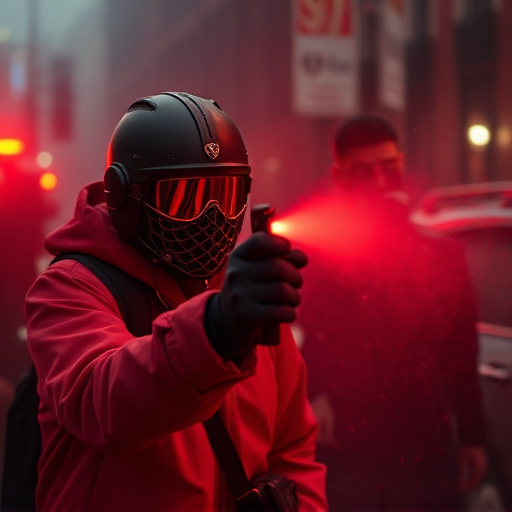Pepper spray temporarily incapacitates attackers by triggering a burning sensation in the eyes and face, causing rapid blinking and disorientation—providing users with escape time. Although not designed to "blind" victims permanently, direct eye contact can cause significant irritation. Effective usage requires training, aiming for vulnerable areas at a safe distance, sweeping in an 'X' pattern, and understanding legal considerations regarding possession and use.
“Pepper spray, a powerful tool for personal defense, has become an increasingly popular choice for civilians seeking protection against potential threats. This compact and easily accessible device offers a non-lethal way to deter attackers, providing users with time to escape dangerous situations. In this article, we explore the science behind pepper spray, its advantages for everyday carry, and crucial safety measures to ensure effective deployment, all while addressing common concerns like its effectiveness in blinding assailants. Learn how to make informed decisions regarding civilian protection.”
- What is Pepper Spray and How Does it Work?
- Benefits and Considerations for Civilian Use
- Safety Precautions and Effective Deployment Techniques
What is Pepper Spray and How Does it Work?
Pepper spray, also known as oleoresin capsicum (OC) spray, is a non-lethal self-defense tool designed to incapacitate an attacker temporarily. It’s a liquid substance derived from chili peppers that contains capsaicin, the compound responsible for the spicy sensation. When sprayed onto the eyes and face, pepper spray triggers a burning and itching sensation, causing the target to blink rapidly and often become disoriented or even temporarily blinded.
The mechanism of action involves binding to specific receptors in the eye and nose, leading to inflammation and irritation. This reaction disrupts normal vision and breathing, providing users with crucial time to escape or defend themselves. While pepper spray is not meant to cause permanent damage, its effects can last several minutes, allowing individuals to get away from dangerous situations. It’s important to note that direct contact with the eyes is particularly vulnerable to being “blinded” by pepper spray, making it a powerful tool for personal protection in various scenarios.
Benefits and Considerations for Civilian Use
Pepper spray, also known as oleoresin capsicum (OC) spray, offers civilians a powerful non-lethal self-defense option. Its primary benefit lies in its ability to temporarily disable an assailant by causing intense irritation and pain in the eyes, nose, and respiratory system. This gives users valuable time to escape dangerous situations. Pepper spray is widely accessible and relatively inexpensive compared to other personal defense tools, making it an appealing choice for everyday carry.
When considering pepper spray for civilian protection, it’s crucial to understand its limitations. Contrary to some myths, pepper spray does not blind users or leave a lasting physical disability. However, the effects can be debilitating, especially in close-quarter encounters. Factors like range, wind direction, and the user’s tolerance should be taken into account. Proper training is essential to ensure effective and safe use, as misapplication could result in accidental injuries. Moreover, legal considerations vary by region, so users must familiarize themselves with local regulations regarding pepper spray ownership and use.
Safety Precautions and Effective Deployment Techniques
When considering defensive spray for civilian protection, understanding safety precautions and effective deployment techniques is paramount. Pepper spray, a popular choice due to its non-lethal nature, can be highly effective against attackers but must be used responsibly. It’s crucial to remember that pepper spray is not designed to blind, but rather to temporarily disable an assailant by causing extreme discomfort and tearing. However, direct eye contact with the spray can cause significant irritation and even temporary blindness, so users should aim for vulnerable areas like the face, neck, and eyes.
Proper deployment involves assessing the threat level, ensuring proper distance, and aiming accurately. Hold the canister upright, activating it at a safe range (typically 2-3 meters), and sweep the spray in an ‘X’ pattern to maximize coverage. Training and practice are essential to ensure users can deploy effectively under stress. Always follow local laws and regulations regarding possession and use of pepper spray to avoid legal repercussions.
Pepper spray has established itself as a valuable tool for civilian protection, offering several benefits in self-defense scenarios. While it’s crucial to understand its effects, such as temporarily blinding users (not permanently), proper deployment techniques and safety precautions ensure its effectiveness. By learning about the working mechanisms, considering key factors, and adopting safe practices, civilians can maximize pepper spray’s potential as a deterrent and tool for personal security without causing lasting harm to assailants.
